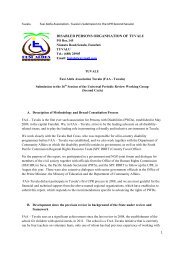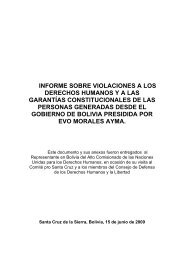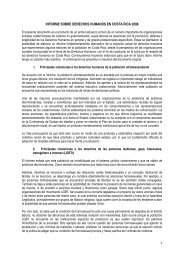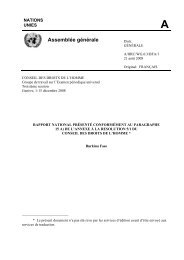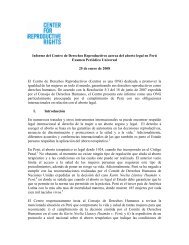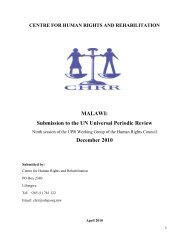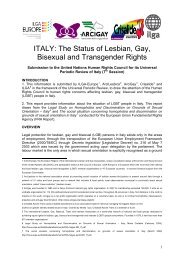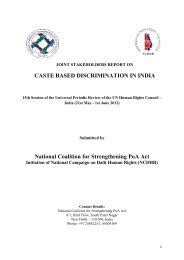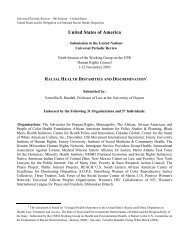Prison Needle Exchange: Lessons from a Comprehensive Review ...
Prison Needle Exchange: Lessons from a Comprehensive Review ...
Prison Needle Exchange: Lessons from a Comprehensive Review ...
You also want an ePaper? Increase the reach of your titles
YUMPU automatically turns print PDFs into web optimized ePapers that Google loves.
The Correctional Investigator commented on the health advantages of needle exchange programs<br />
and found that, “the prohibition of drug injection, and the resulting clandestine use of<br />
scare injection tools, have resulted in great harm” to federal prisoners. 25 Accordingly, he<br />
made the following recommendations:<br />
CSC introduce, before March 31, 2005, a safe needle exchange program based<br />
on thorough consultation with medical and security experts, offenders, CSC staff<br />
and concerned community organizations. Failing a positive response <strong>from</strong> CSC,<br />
the Minister direct the introduction of such a program. 26<br />
Recognition that prisoner health is public health<br />
Since the release of the original report, CSC has embraced the view that prisoner health is<br />
public health, and has taken the position that the Public Health Agency of Canada (PHAC)<br />
is primarily responsible for addressing the public health needs of all Canadians, including<br />
prisoners. 27 In April 2005, PHAC and CSC entered into a memorandum of understanding<br />
regarding the potential introduction of needle exchange programs in federal correctional<br />
institutions. 28 Under the memorandum, PHAC undertook to:<br />
• provide scientific, medical and technical advice on the effectiveness of needle<br />
exchange programs in prisons, <strong>from</strong> a public health perspective;<br />
• analyze published and unpublished evaluations concerning the effectiveness of prison<br />
needle exchange programs; and<br />
• analyze the potential risks and benefits of introducing needle exchange programs in<br />
Canadian prisons.<br />
PHAC was expected to have delivered its report, including advice and recommendations, to<br />
CSC by August 2005. As of 1 April 2006, it had not done so.<br />
A renewed call for pilot projects<br />
The relatively little experience available appears to show that, where risks are<br />
great, such as in countries with high prevalence rates of HIV and hepatitis, carefully<br />
introducing a syringe- and needle-exchange programme would be justifiable<br />
based on the experience already available . . . When prison authorities have<br />
any evidence that injecting is occurring, they should consider an exchange<br />
scheme, regardless of the current prevalence of HIV infection. 29<br />
The evidence and experience of PNEPs presented in this update is consistent with the evidence<br />
and analysis in the first edition of the report. <strong>Prison</strong> needle exchange programs:<br />
• are safe;<br />
• do not lead to increased drug use;<br />
• do not condone illegal drug use or undermine abstinence-based drug treatment programs;<br />
• have been successfully introduced in a range of prison environments;<br />
• reduce risk behaviours, prevent disease transmission, and otherwise improve the health<br />
of prisoners who inject drugs;<br />
• are most effective when prison administration, staff and prisoners support them; and<br />
• are best introduced as pilot projects. Despite the overall robustness regarding the find-<br />
vi <strong>Prison</strong> <strong>Needle</strong> <strong>Exchange</strong>: <strong>Lessons</strong> <strong>from</strong> a <strong>Comprehensive</strong> <strong>Review</strong> of International Evidence and Experience



